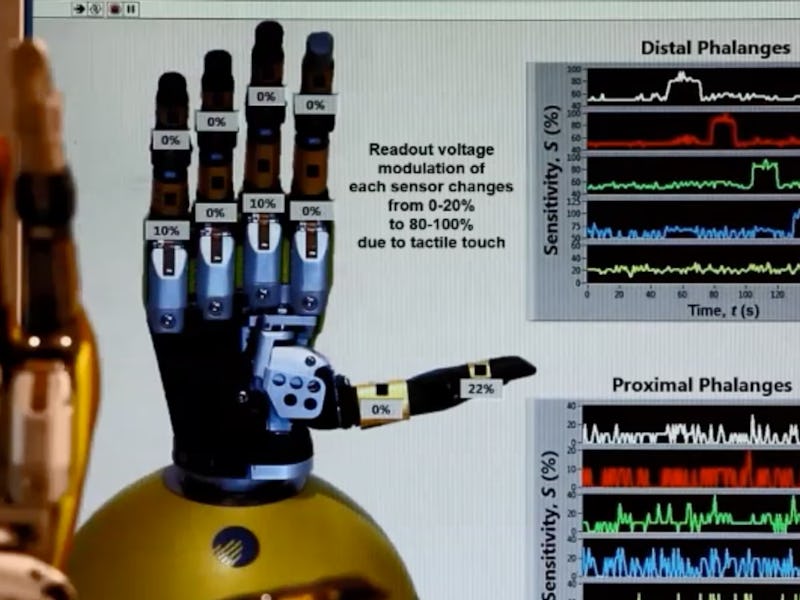In the future, robots and advanced prosthetic limbs may be covered with a tactile skin that can harvest energy directly from the sun, powering their internal motors. In a new study published Wednesday in Advanced Functional Materials, a team of researchers at the University of Glasgow’s Bendable Electronics and Sensing Technologies group announced that it had created a flexible, transparent and tactile electronic skin, which could be used for either robots or amputees to make artificial body parts react more effectively.
“Applications requiring on-board energy sources are directly relevant,” Ravinder Dahiya, one of the paper’s authors, tells Inverse. “For example, in remote areas the disposable e-skin with biosensors and on-board source of energy could be critical to overcome some of the global health challenges.”
The skin is made up of a transparent layer based on graphene capable of sensing touch, alongside a second layer with a photovoltaic cell capable of harnessing energy from sunlight. The skin itself uses a minimal amount of energy, just 20 nanowatts of power per square centimeter, so the limb could act independently of energy sources.
The team placed the tactile skin layer onto a robot hand to test its reaction abilities. The sensors are capable of detecting a broad pressure range. When handed a soft object, the robot can sense the pressure and knows how hard to grip:
The sensing hand in action.
“Robots capable of sensing each other or robots interacting with humans are the scenarios for the future,” Dahiya says.
The concept has been demonstrated with a prototype, and the team tells Inverse that depending on hardware partners, the technology could reach the market within the next two to three years. It may take longer to find its way into prosthetics, as the technology will have to work with human tissue in mind.
It’s not the first time researchers have looked to emulate human skin for robots. In October, researchers at the University of Tokyo announced they had developed a robot capable of “sweating” to reduce component strain. The boost meant that the 123-pound “Kengoro” robot could do push-ups for 11 minutes without burning out any of its 108 motors.
The Glasgow team’s robot skin may find more use in artificial limbs than Kengoro, though. With the pressure meters, the skin can restore “critical haptic perception” to amputees, while the solar panels mean patients will be able to move freely through their lives without needing to worry about bulky battery packs or recharging. That said, the idea of supercharged solar robots that can feel their environment is pretty exciting.
Update 3/27: The story has been updated to include Dahiya’s comments.
